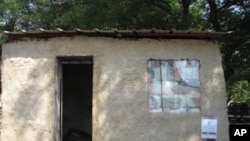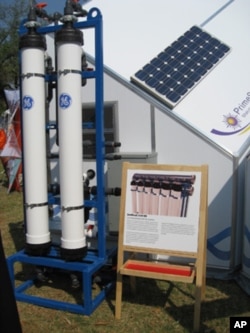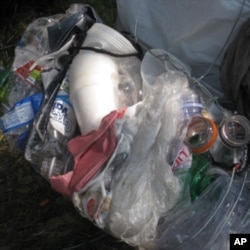A refugee camp built by students and volunteers spreads over Southern Methodist University's expanse of green lawns and live oaks. The affordable shelters are designed to be used by the poor as well as survivors of war and natural disasters.
The diverse structures are clustered around a white United Nations tent. A six-sided poly-propylene and aluminum house is adjacent to a dome-shaped igloo made of sandbags. Next door is a recycled plastic-brick-and-mud hut. SMU senior engineering major Carson Linstead, who helped erect the dozen different buildings, spent a week living in them.
"The biggest thing is I'm getting a perspective about what's going on in different parts of the world," he says. "Whenever you're an SMU student, it's easy to get caught up in the city and kind of your own little bubble, your own little world. Whenever you're an engineer, there are so many problems you're capable of solving."
Problems such as lack of shelter or power in post-Katrina New Orleans, Haiti's Port-au-Prince after the earthquake, or impoverished villages in the developing world.
"By the time we reach 2020, there's going to be about 1.7 billion people living in slums and so we would like to effect change," says Stephanie Hunt, co-founder of the Hunt Institute for Engineering and Humanities at SMU. The institute was established to solve problems of the poor in the United States and around the world through engineering, collaboration and the free market. It helped fund the village on SMU's campus.
"We would like to inspire the next generation of engineer, entrepreneur, anthropologist, lawyer, anyone who can help," she says. That extends to helping find solutions to every day problems facing some of the world's poorest people, such as access to clean water.
The little campus village has a low-pressure, low-cost water purifier capable of creating enough drinking water for 3,000 people a day. Student Linstead points to solar panels on the roof of a pre-packaged shelter, and explains they can be used to re-charge cell phones.
"So what most people don't know is, whenever you go over to these countries like Kenya and places like that, that cell phones are actually a huge, huge commodity," he says. "While these people almost have no money, they all have cell phones but they don't have any electricity to charge them."
With the solar panels, now they will.
The goal is not just to save lives, but to change them. The Institute hopes some entrepreneurs might earn some money with these ideas. One of the structures in the SMU village was built with bricks made mostly from recycled plastic bags.
They're held together with heavy wire. Harvey Lacey, father of two college-aged sons, including one here at SMU, heard about this project and contributed his invention. It’s a heavy-duty, hand-crank compactor that anybody can use to form the big bricks he calls Ubuntu Blox.
"The beautiful things about this here, these blocks right here weigh less than two pounds. They're very, very stiff, alright? These things can go for many generations of housing," says Lacey, who is giving the design of his product away. Anybody can follow his online plans to build the compactor that turns plastic bags into bricks.
On this warm day, it’s cool inside the mud-plastered Ubuntu Blox hut, thanks in part to the thick plastic insulation. Lacey says it will soon be tested by scientists for its durability and insulating properties. Kenyan architect Ronald Omyonga, visiting the global village before returning to his native Africa, says his country is full of these recyclable bags that now are trash. But with Lacey’s design, he says that litter could be transformed into safe, affordable housing. He dreams of other benefits too.
"I look at the Harvey Lacey hut, as a means of creating jobs," says Omyonga. "And cleaning the environment, but turning waste into something that can form houses, not just for the poor."














